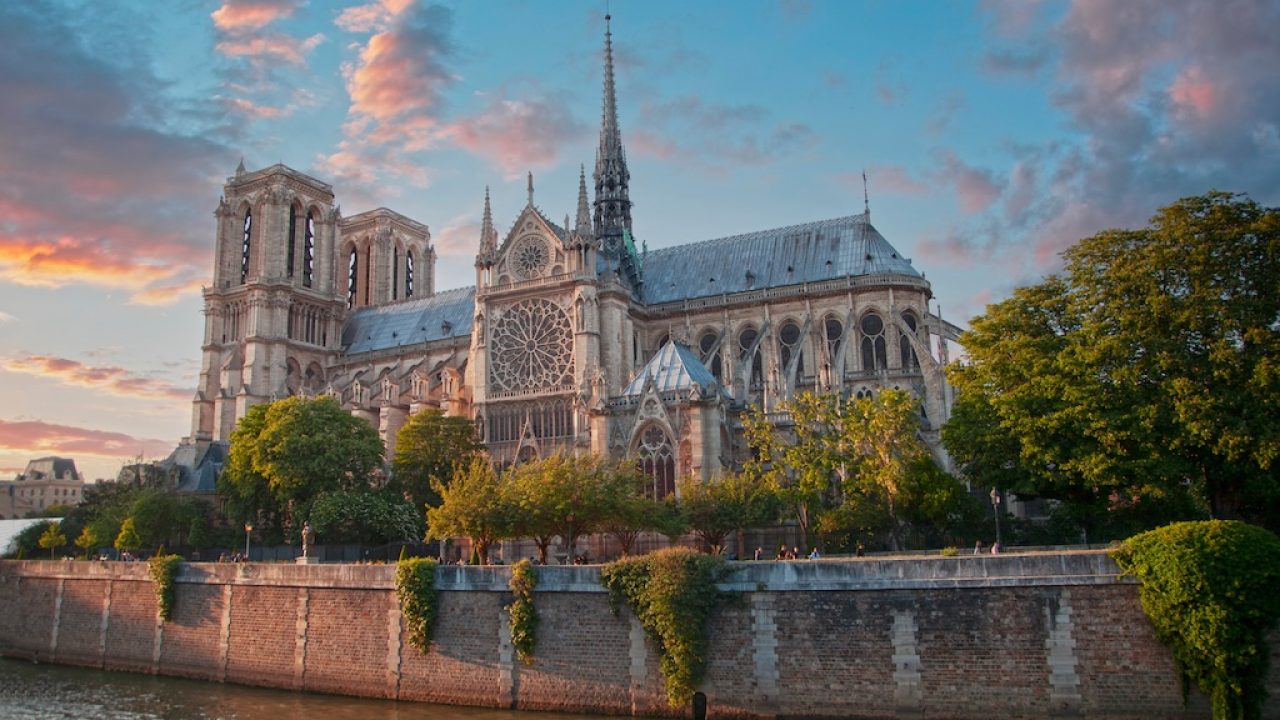
© Shutterstock
Fazal Ahmad, London, UK
Location: Paris, France
Belief: Christianity
Era: 1182 CE
Upon the River Seine in the heart of France’s capital, lies the Cathedral of Notre-Dame de Paris, one of the world’s great religious landmarks.
Construction of this Catholic cathedral began in 1163 under the supervision of Bishop Maurice de Sully, and although it was officially consecrated in May 1182, the main construction continued until 1260, almost a century later. The Cathedral of Saint Etienne had stood near the site since the 4th century, replacing the Roman Temple of Jupiter, but this was demolished to make way for the new cathedral due to the growing Christian population in the city.
Built in the Gothic style of architecture, the Notre-Dame Cathedral is famous for its two towers rising to 69 metres. The main spire rises to a height of 96 metres. The outside façade features many Biblical characters. At the time, most worshippers would have been unable to read but would have recognised the statues and images of characters that they knew from Biblical stories.
The cathedral has a colourful history. It was damaged during the French Revolution, when many iconic images and metal objects were stolen. For a time, it served as a warehouse and, from 1793 to 1802, was re-designated as a Temple of Reason, an atheist temple. A decade later, Emperor Napoleon restored it to the Catholic Church and crowned himself here in December 1804, bypassing the Pope’s sanction.
The huge bells of Notre-Dame were rung to mark the armistice at the end of World War I in 1918. In 1944, liberation from German occupation at the end of World War II was marked here by General Charles de Gaulle with a special mass service. The bells rang again in November 1989 to mark the fall of the Berlin Wall and the reunification of Germany.
Catholicism is the majority religion in France, and was introduced after King Clovis I’s conversion around 511 CE. Religion has declined in the last century, with less than 5% of Catholics attending mass. In a 2022 poll, 48% identified as Catholics, 4% as Muslims, and 34% as atheists.
The Notre-Dame Cathedral is still used for Catholic services and also houses significant Christian historical relics. It has a capacity to hold around 9,000 worshippers.
Until 2000, there were efforts to clean up and restore the facades of the Cathedral, but a huge fire in April 2019 caused significant structural damage to the roof and took five years to restore. The first public mass since the reopening was held on Sunday, 8th December 2024.
References:
A. Ghose, Family Guide Paris (London, UK: Dorling Kindersley Ltd, 2014).
Notre-Dame de Paris. Accessed: December 6, 2024. https://www.notredamedeparis.fr/en/



Add Comment